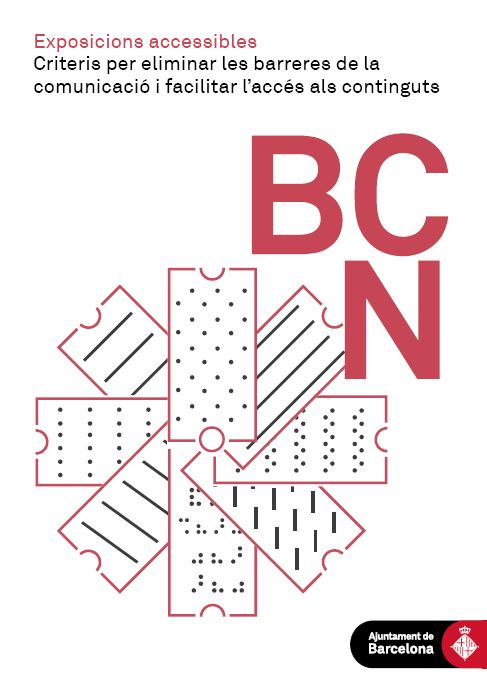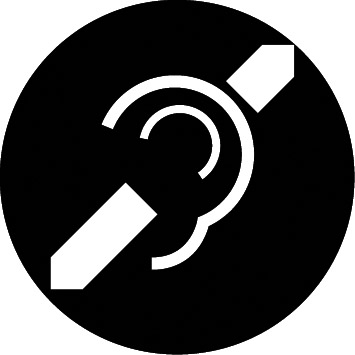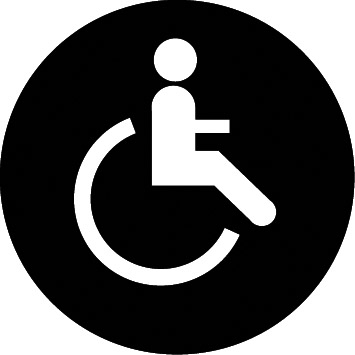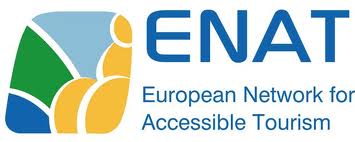FAQs
- What do we mean when we talk about accessibility?
- What is Universal Design?
- What are communication barriers?
- What is web accessibility?
- What does WAI mean?
- What is audio description?
- What is Braille?
- What is an induction loop?
- What’s the difference between a guide dog and an assistance dog?
What do we mean when we talk about accessibility?
This concept has evolved in the last few years. Although it was initially concerned with wheelchair access and eliminating architectural barriers, it now has a broader scope that includes the world of culture and other types of disability in addition to physical disability and Persons with Reduced Mobility (PRM).
Definition: accessibility is the degree to which everybody can use, visit or access goods and services, regardless of their abilities.
What is Universal Design?
In the late 1980s, an American architect named Ron L. Mace, a wheelchair user for most of his life, invented the term Universal Design. Design for everyone is based on an integrating approach that is applicable to any type of environment, product or communication. It turns away from adaptations and specialised designs and does not involve an excessively large additional investment. Universal Design benefits users of all ages and levels of ability. Not only is it useful for people with disabilities, it brings clear benefits to the general public: in the same way that a ramp is useful for more than just wheelchairs, enjoying a work of art through senses other than vision can be an enriching experience for anybody.
What are communication barriers?
According to the Autonomous Government of Catalonia's Accessibility Code, these are the limitations that exist in regular information and communication systems for certain people who have sensory or other types of impairments or disabilities.
What is web accessibility?
When designing a website, it is important to bear in mind the possibility that it may be visited by any type of user: an elderly person, someone with a sensory, motor or cognitive disability, or people using mobile phones, PDAs or old computers, etc.
All these types of users must be taken into consideration and the website must fulfil certain simple programming requirements. Correctly applying these accessibility guidelines will guarantee that everybody can access the website's content.
What does WAI mean?
WAI stands for Web Accessibility Initiative, an international effort to improve the accessibility of the World Wide Web for people with disabilities. WAI develops guidelines and other technical reports that relate to the several different components of web accessibility.
WAI defines three levels of conformance, according to the checkpoints priorities reached: A, Double-A and Triple-A. From December 2008, public bodies are legally required Double-A accessibility level.
What is audio description?
Audio description techniques can be used to make a show, audiovisual presentation or tour accessible to blind people.
Audio description can be live (transmitting commentary via headphones to the audience of a play, opera, etc.), in person (during a guided tour around an exhibition), or recorded (for audiovisual presentations).
In all cases, the aim is to provide blind people with the details that they cannot perceive visually, always respecting the natural pauses in dialogues to insert descriptions of the essential visual elements.
What is Braille?
Braille is a system of reading and writing used by blind people. It is a tactile alphabet based on six points, arranged in two columns of three points each, which, when combined, form all the possible letters, numbers and musical notes, etc.
In this way blind people can use their fingers to directly read any information that has been printed using this system, for example books, signs or posters.
What is an induction loop?
People who use a hearing aid for an auditory impairment can benefit from induction or magnetic loops.
This is a system whereby a microphone emits sounds, which are received directly by the hearing aid. It can be installed in halls, events, information points, reception desks, etc., or it can be mobile. This system improves communication as it greatly enhances the clarity of acoustic reception, making words easier to understand.
What’s the difference between a guide dog and an assistance dog?
The guide dog for the blind is a type of assistance dog. The service dog is one that has been trained, tested and certified to assist a disabled person.
There are several types of assistance dogs:
- Guide dog: Trained to guide a blind person. Wearing a harness.
- Service dog: Trained to help persons with a physical disability.
- Warning dog: Trained to alert the deaf person when a particular sound is emitted, indicating the source.
- Warning dog for persons suffering from epilepsia, diabetes...: Trained to alert his/her master right before a seizure or other medical conditions such as hypoglycemia.
In Catalunya, the law protects and guarantees the access of assistance dogs in all public places.







